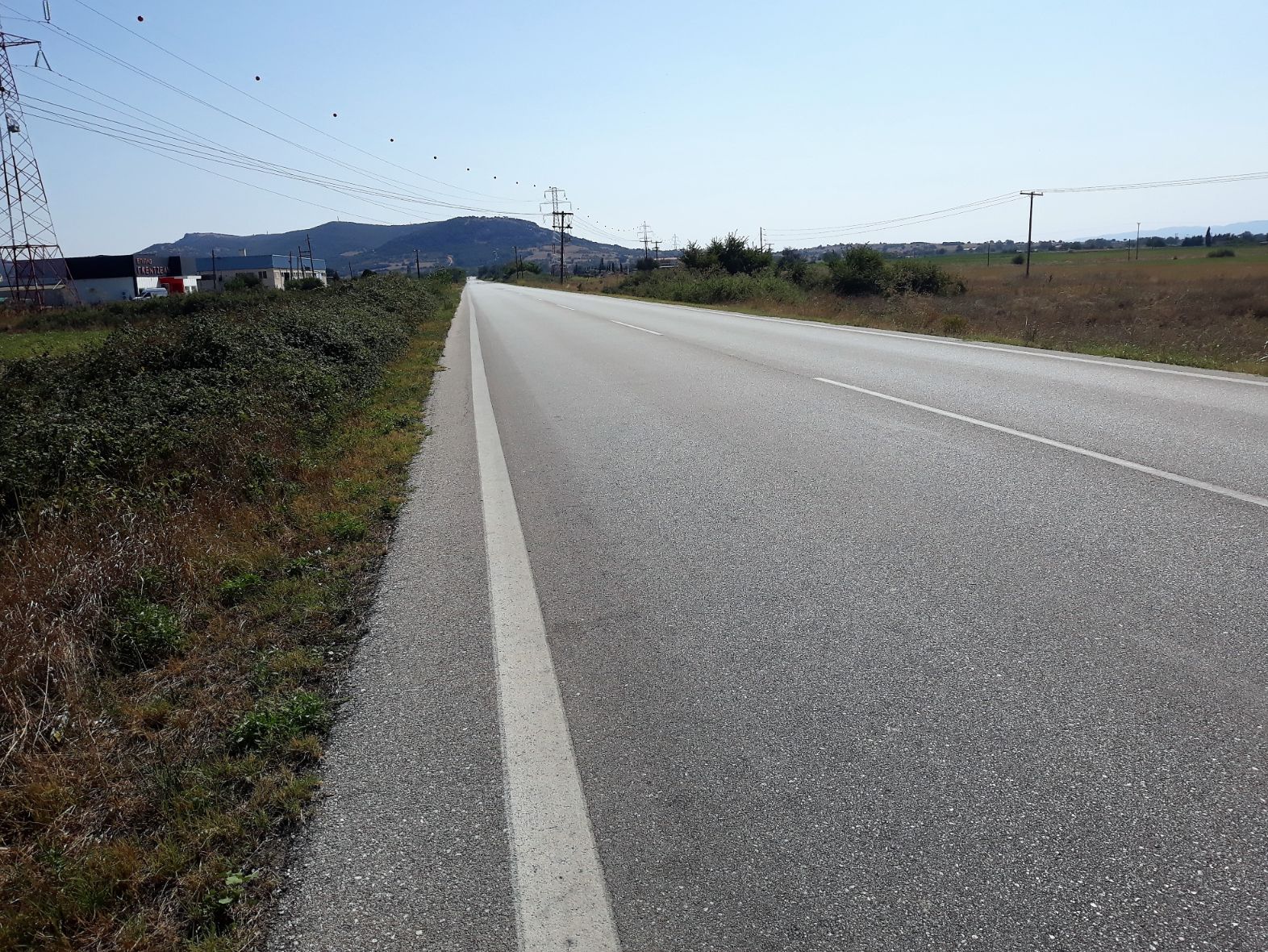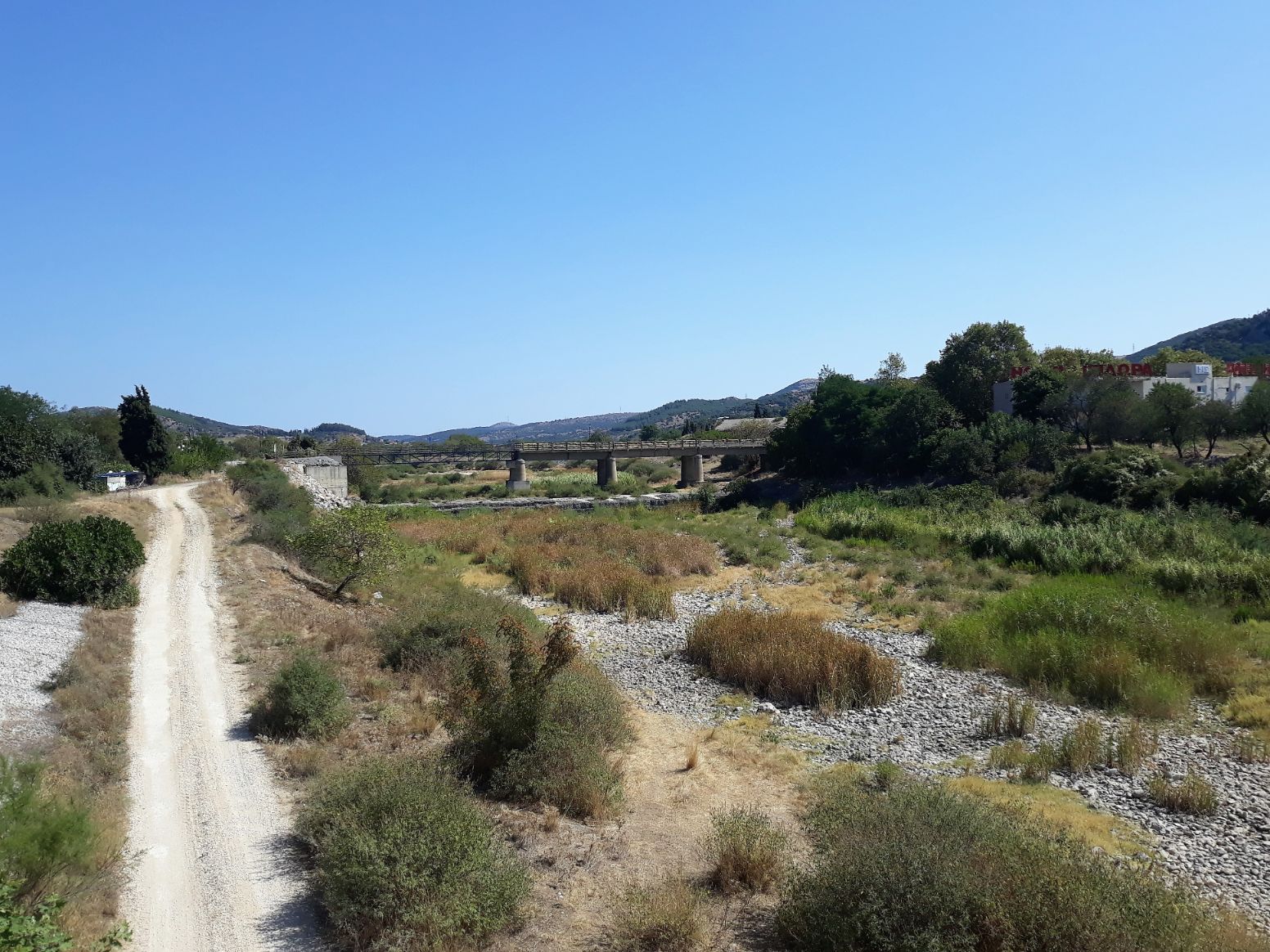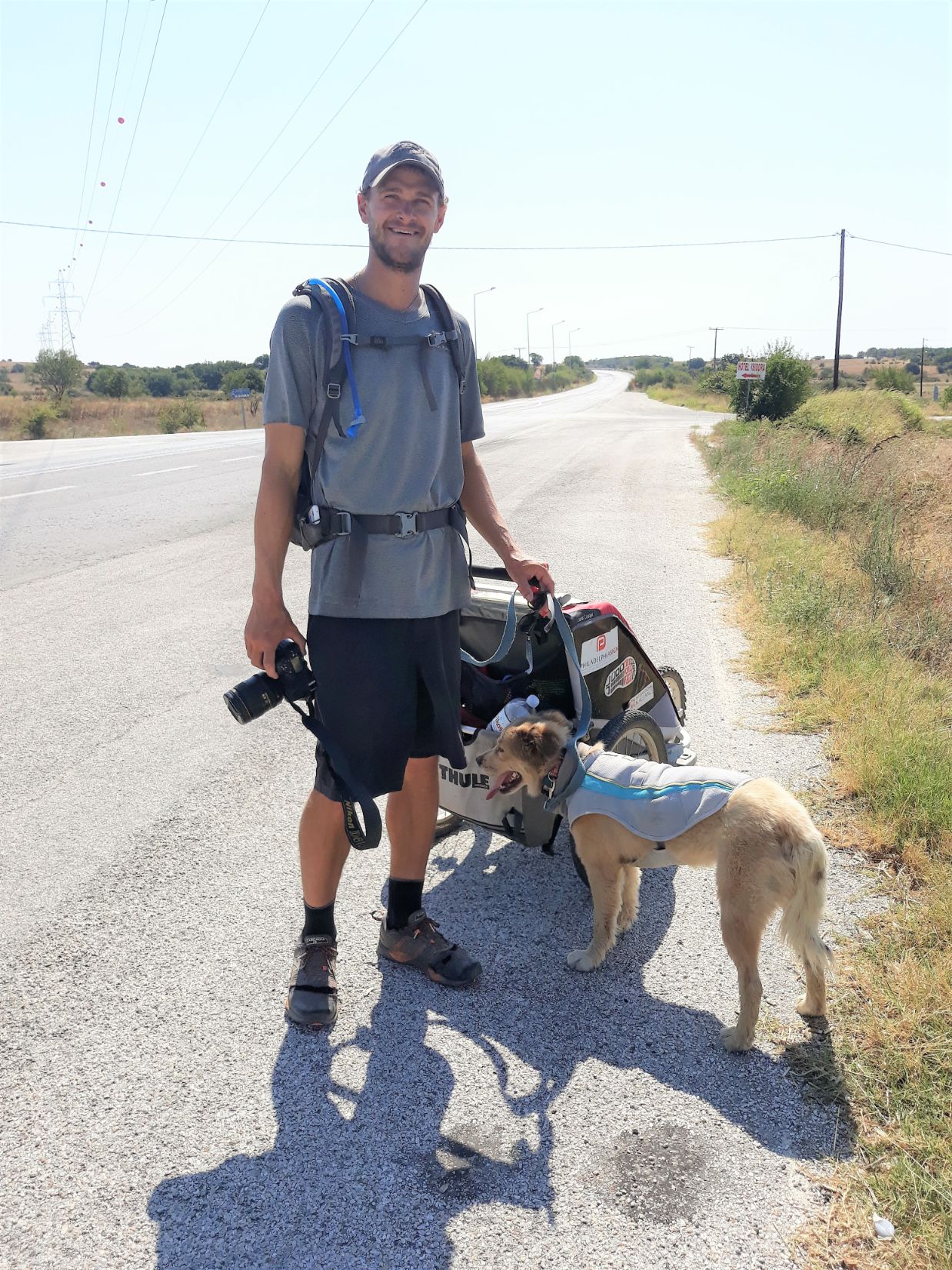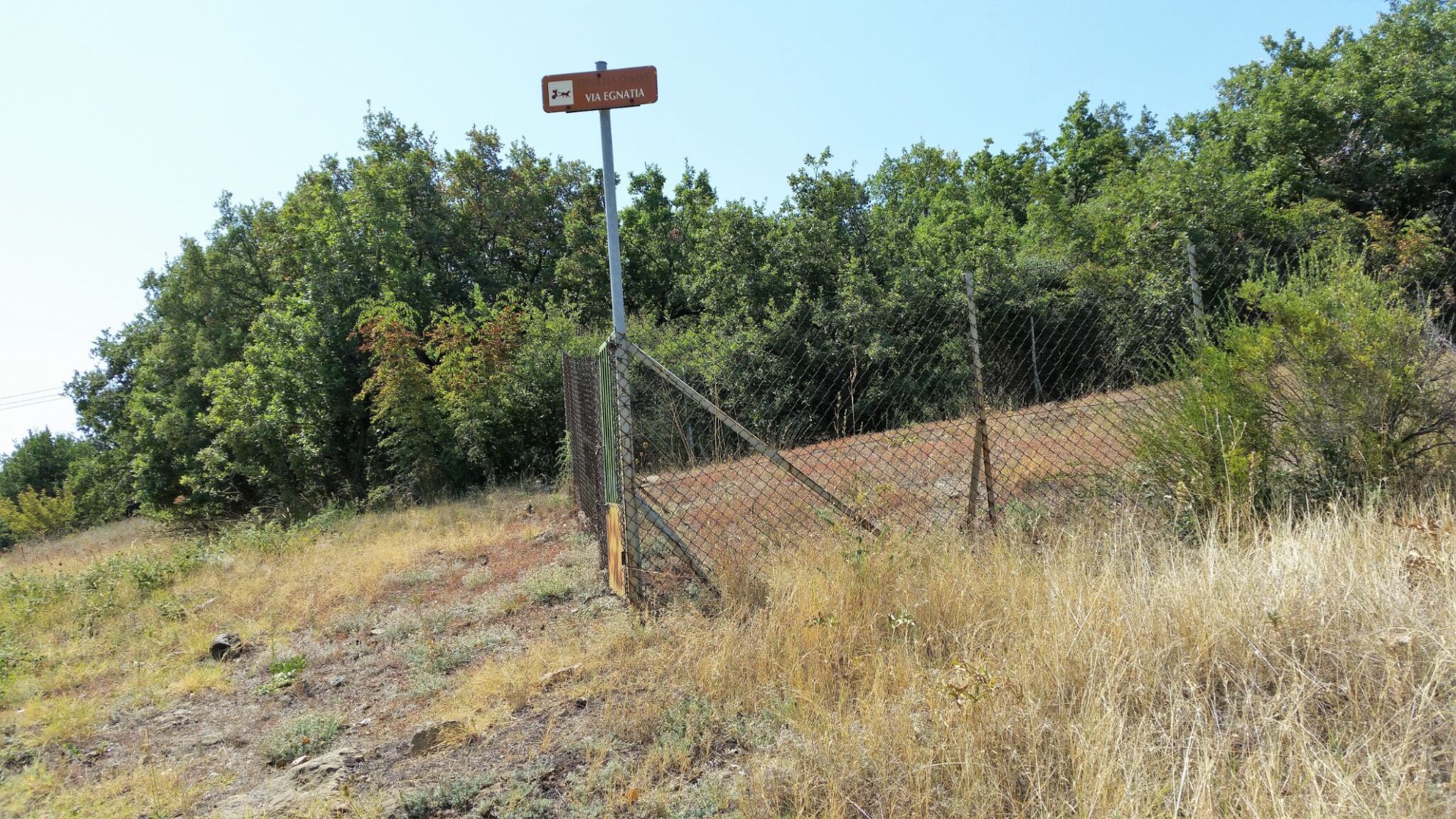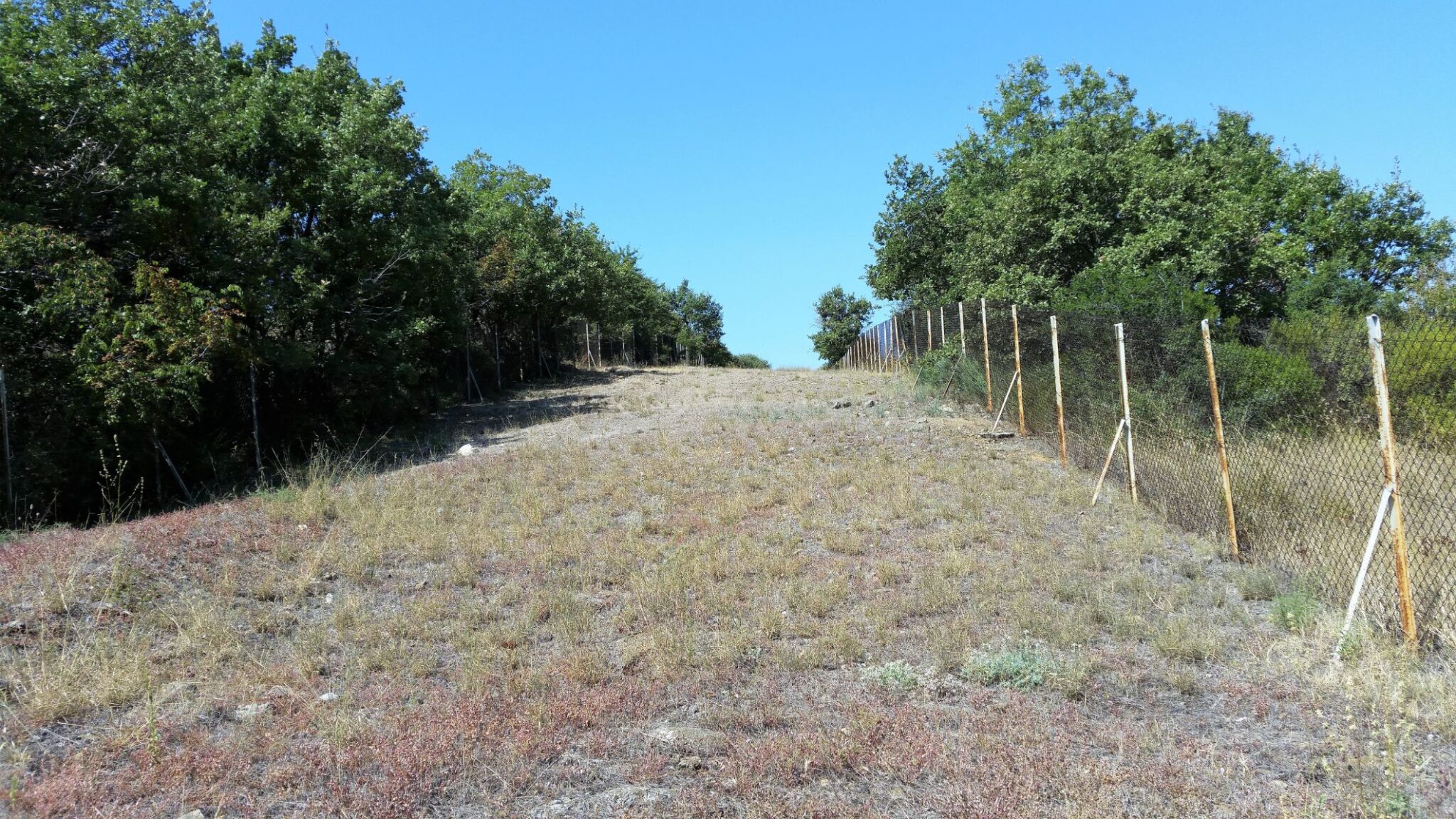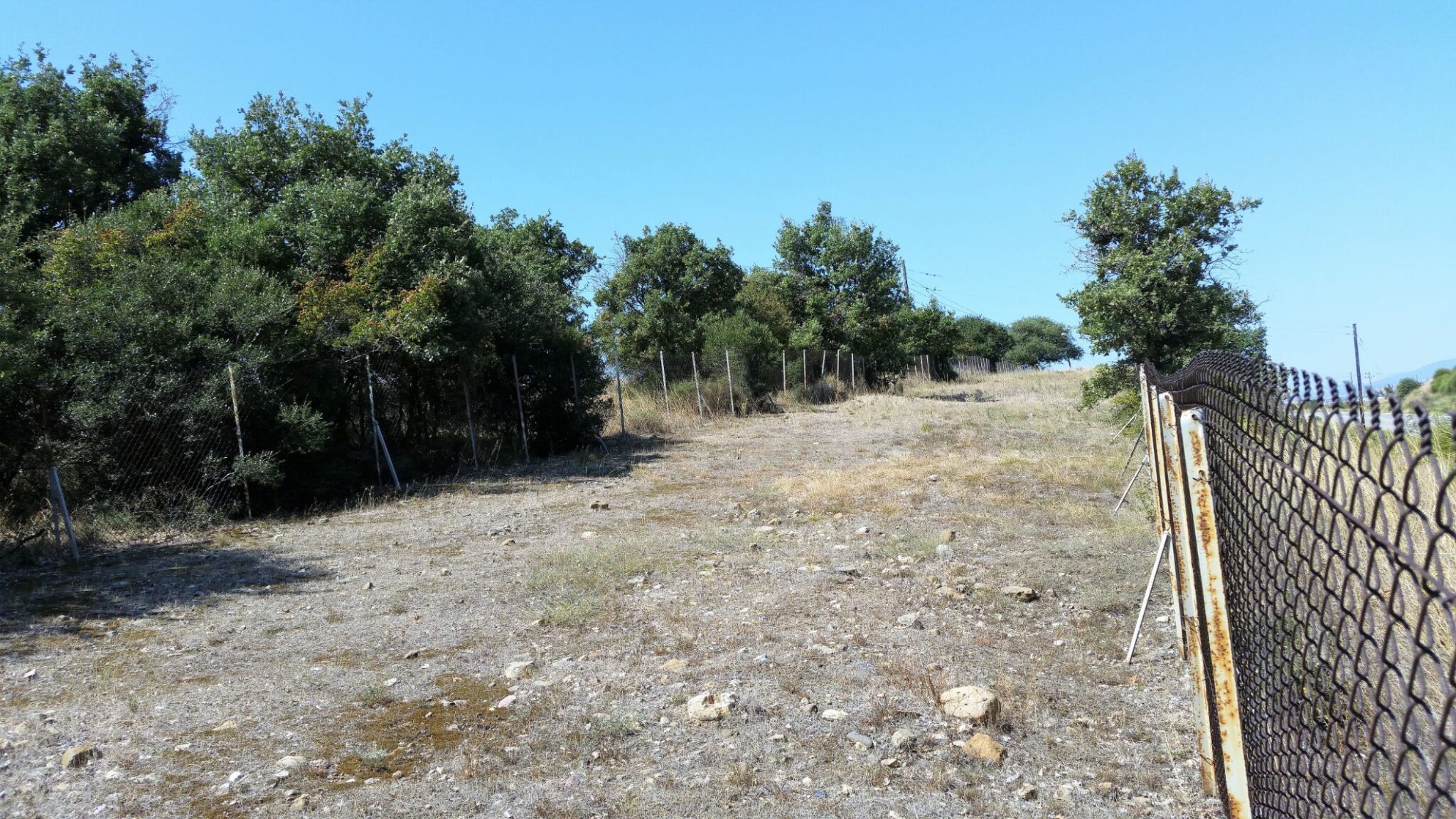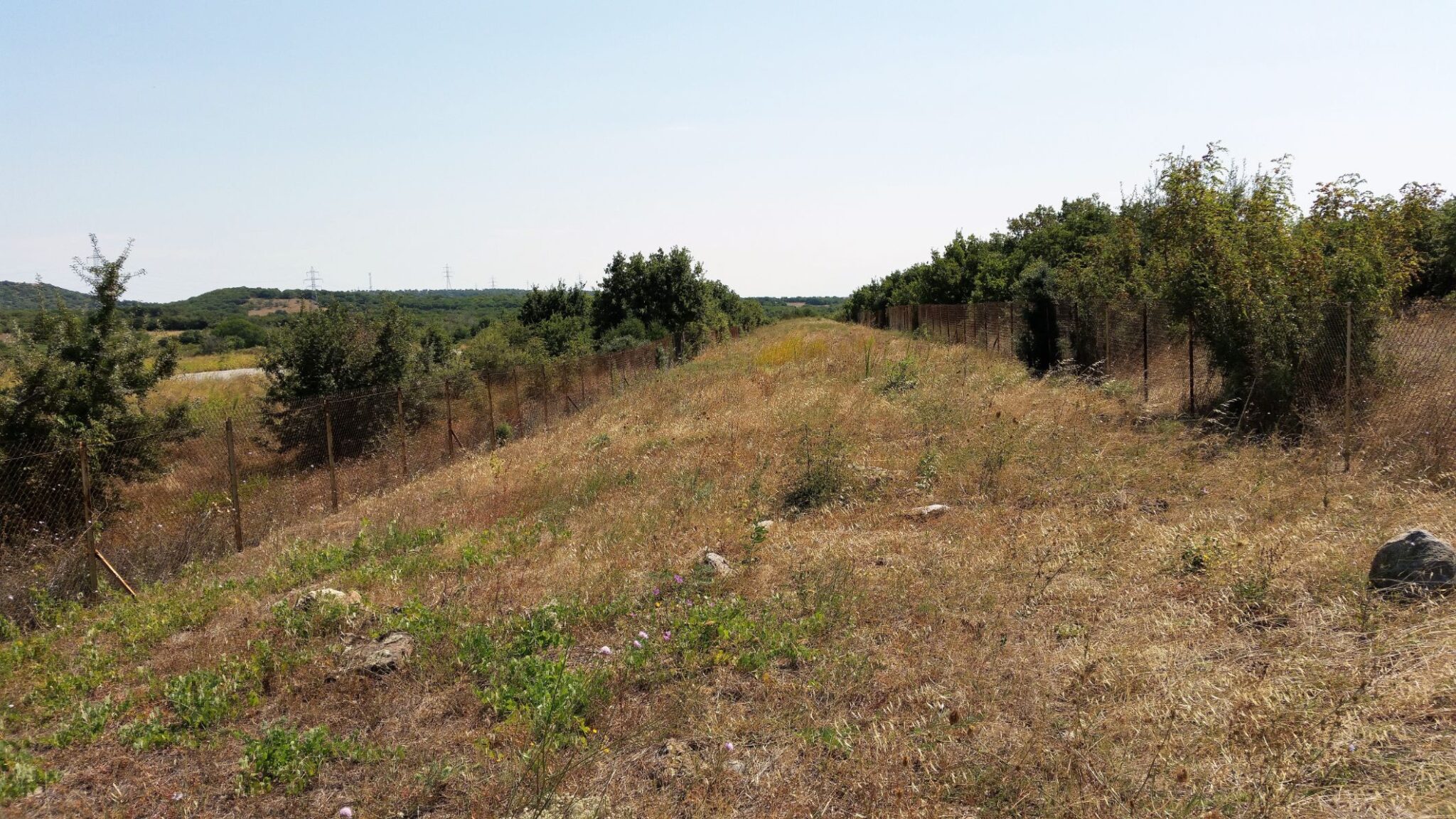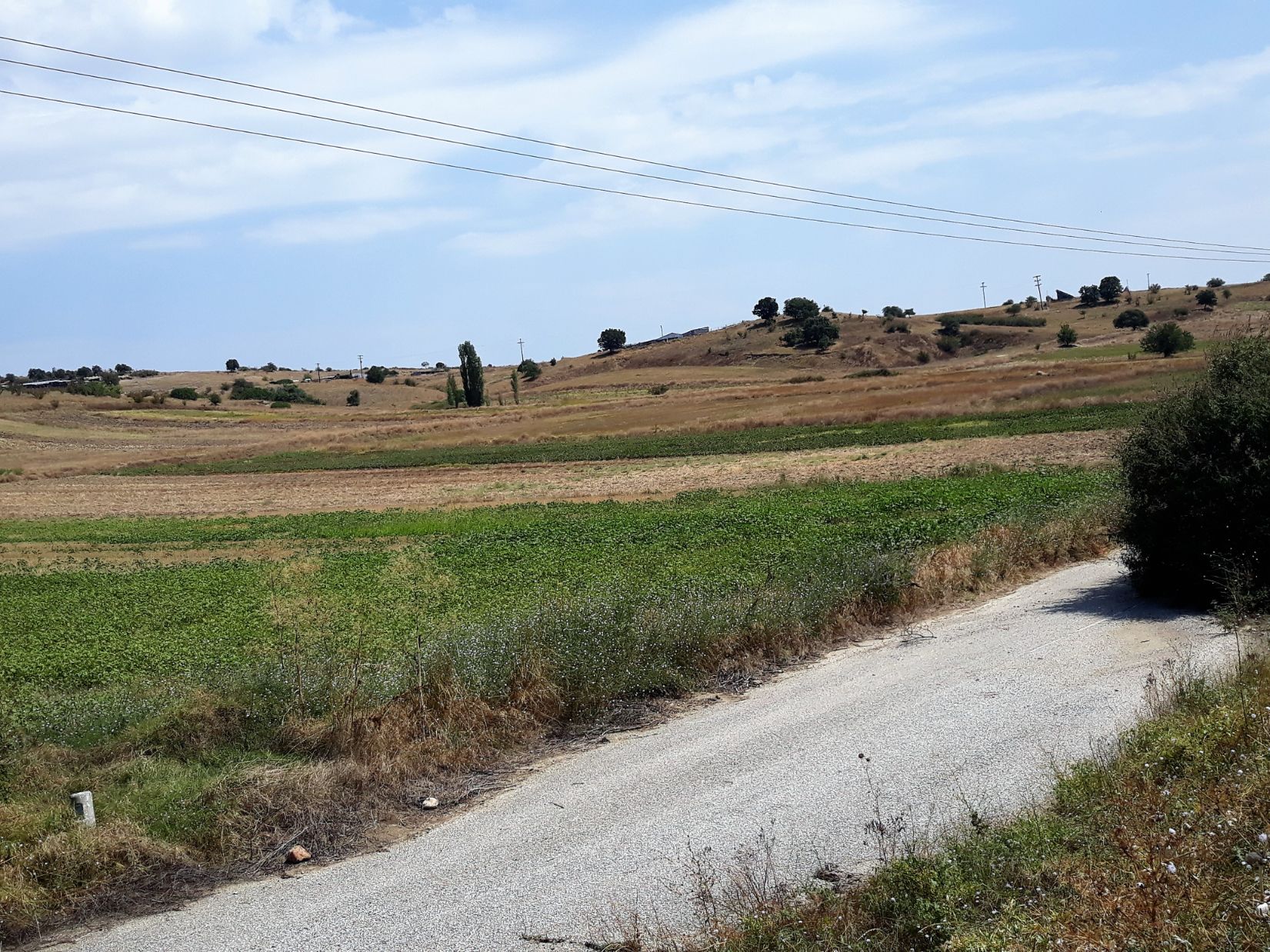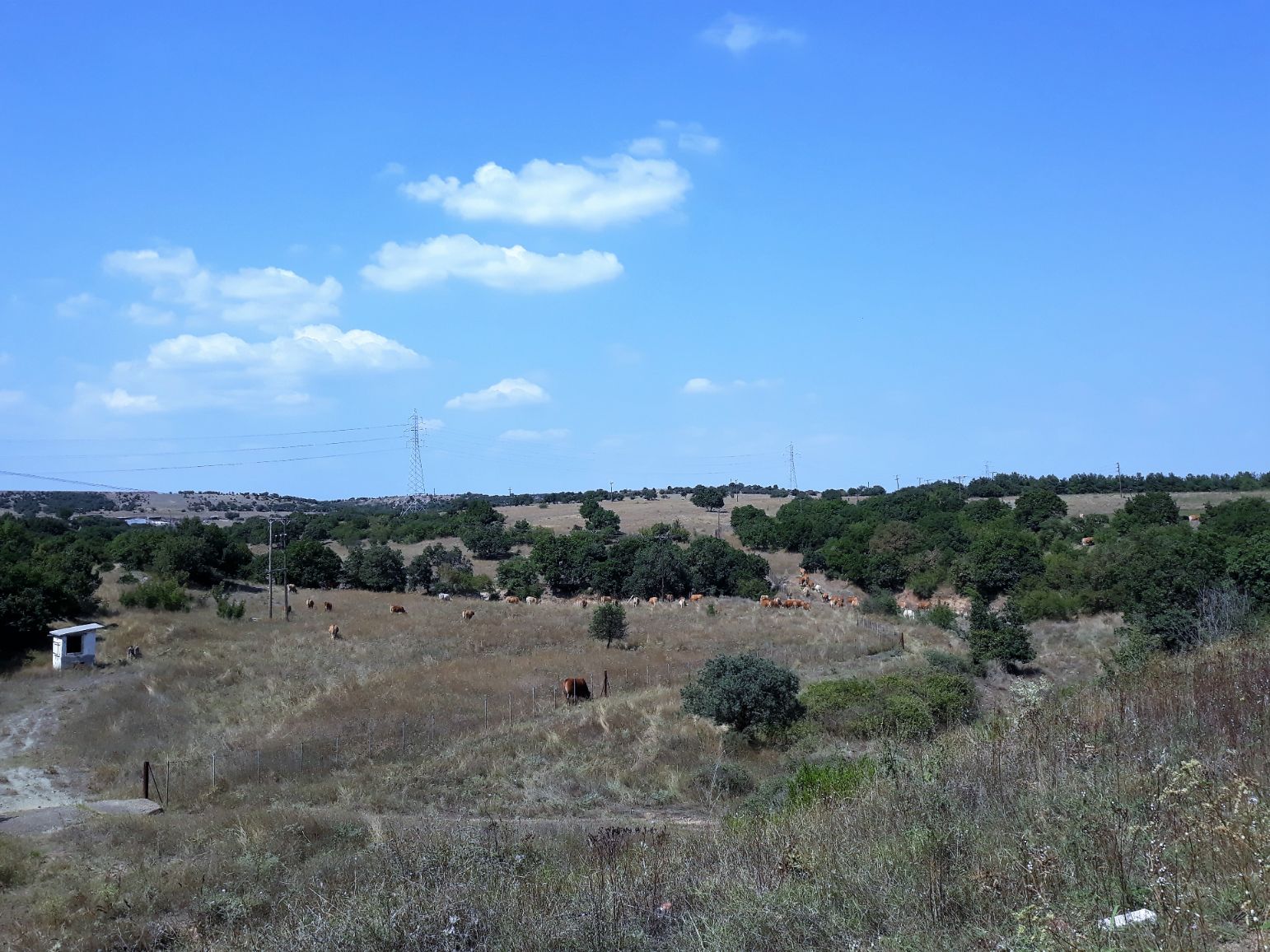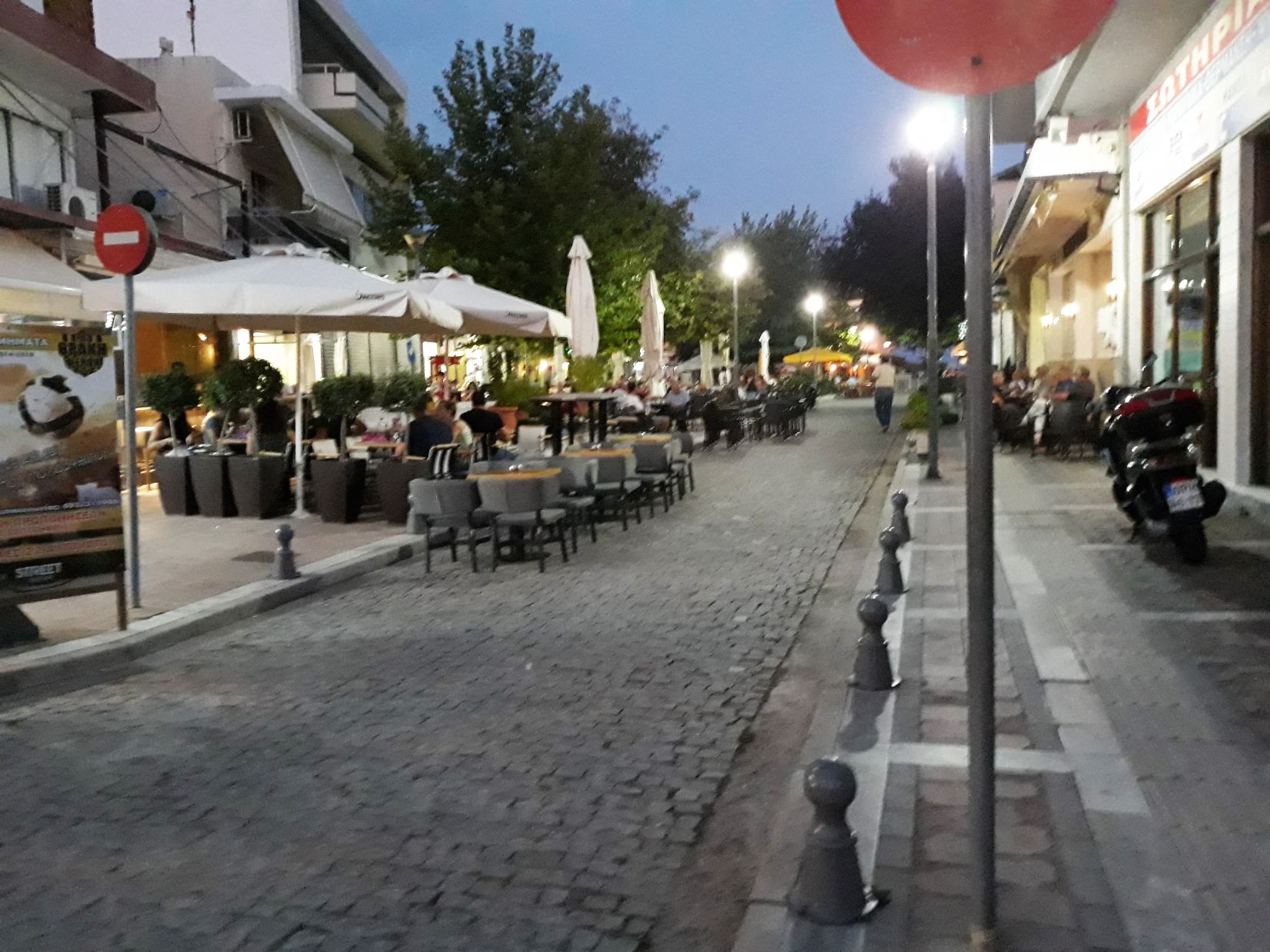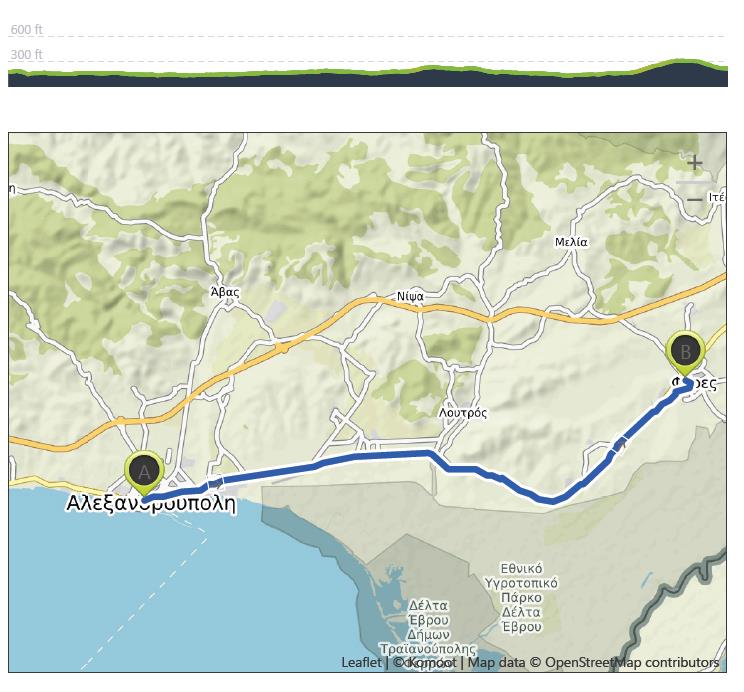Alexandroupolì to Feres – August 21st
Distance: 29.1 km – Elevation +160 m -130 m
Weather: Sunny. Temperature: High 31 degrees
I took the straight route out through the eastern suburbs of Alexandroupolì and it was so different from the western suburbs of yesterday. This is where the light industry, out of town shopping areas, car showrooms, and supermarkets had been hiding. The suburbs extended as far as the airport, ten kilometres out of town. After that, the road became quiet again.
About 15 kilometres into today’s walk I reached the area of Traianoupoli where there have been thermal baths since Roman Times and I was taking a few photos when I heard a shout from the other side of the road, an American accent, I looked over and there was Tom from Pennsylvania complete with a hand trailer and dog heading for Mongolia! He was on a walk around the world having walked the length of the Americas! and now Europe and beyond. This journey of his started in Denmark to Spain and somehow to where we met. The dog has walked with him since they became friends in Texas! We exchanged contact details and went on our different ways. A wonderful chance meeting.
‘The ruins of an important Roman city named Traianoupolis, are located 14-km to the east of Alexandroupolis and south of the nearest village that is called Loutra. The city was founded in 98 – 117 AC from the emperor Marcus Ulpius Traegnus and is build on the main axis of the Via Egnatia, the visitors can see the remains of the city, right to the road that is leading from Loutra to Monasterake.
Presumable this place was chosen because of the spa, which are active until today. The Romans kept the Greek political organization. According to epigraphic and monetary sources we know about the existence of the Holly Senate, the municipality and the races. Already from the 2nd AC century we know that a Christian community is making its appearance. In 161 AC Agia Glekerea died a martyr to her faith because she refused to worship Zeus.
From the 4th AC century the city becomes a metropolis. The city was abandoned after several disasters that happened between 1343- 1347 AC.
The wall of the city according to the information of Prokopius was repaired by emperor Justus in the 6 AC century unfortunately only a few parts of the wall are remaining and these are in bad conditions. Behind the Hanna you can find baths, which are there from the ages of the Ottoman Empire.
You can also see ruins of church on the hill of Agios Georgios, presumable an Acropolis of the Roman settlement, ruins of a Turkish opium den known as Esaklar, which was described from the Turkish traveler Evligia Tselembe in 1668.
Recently a tomb with gems from the 1st AC century was found in the surrounding area of the city, nowadays the gems are exhibited in the archaeological museum of Komotene where you also can see a solar watch, which is offered to the nine muses and two marble icons from the 11th- 12th century, all those exhibits are coming from the same area.’
Also close to Traianoupoli I came across further sections of the original Via Egnatia which are fenced for protection. It was good to know that I was heading in the right direction to Byzantium! I arrived in Feres and found good accommodation at a reasonable price. In Feres, I met a newlywed young French couple, Jean and Marie and guess what they were walking to Jerusalem. Today was my 70th day of walking since leaving Rome and it was the first day I had met walkers going in my direction!
Feres was an unexpectedly lively little town where the central square came to life in the evening. I enjoyed a delicious last supper in Greece, beetroot salad followed by chicken fillets Greek style.
